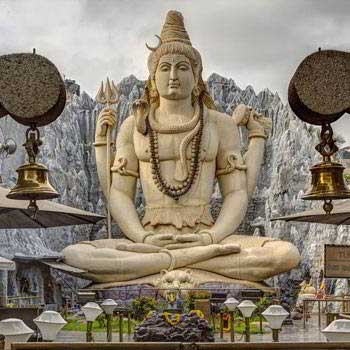Bengaluru (Bangalore) Travel Guide: Culture, Climate, and Top Attractions

Known as the Silicon Valley of India and officially named Bengaluru, this city the capital of the southern Indian state of Karnataka, where Kannada is the official language. Premier organizations like ISRO, Infosys, IBM, Wipro, DRDO & HAL have their headquarters here. It's the fifth most populous urban agglomeration in India. Prestigious institutions such as IISC, IIM, NIFT & NIMHANS are dream destinations for many aspiring students.
Historians document that the Cholas and Hoysalas ruled present-day Bangalore until 1537 CE. It was then that a feudal ruler named Kempé Gowda from the Vijayanagara Empire rose to prominence by establishing a mud fort—considered the foundation of modern Bangalore. Throughout history, various kings and nawabs controlled the area. Consistent development occurred, especially under British rule when Bangalore expanded into a cantonment region. Since then, Bengaluru has been a fusion of an old city and a cantonment.
People and Culture:
Karnataka has long hosted a diverse population with varied cultures. Native Kannadigas live alongside Kodavas, Tuluvas & Konkanis as well as several tribal sects who’ve all contributed to the state's rich cultural tapestry. Additionally, Karnataka hosts South India's largest Tibetan settlement. Besides Kannada, understanding Tulu, Hindi, English, Telugu or Tamil can be beneficial here. Predominant religions include Jainism & Hinduism along with Islam. More recently Sikhism, Christianity & Buddhism have also become part of its religious landscape.
Climate and Weather:
Bangalore enjoys favourable weather year-round thanks to its pleasant and moderate climate. In Bangalore's winters one doesn’t shiver much while in summers one won’t sweat excessively either—it’s comfortably cool in winter and warm in summer.
Summers:
From mid-March to June is when you might feel some heat rays in Bangalore, but daytime temperatures rarely exceed 39°C making summers quite mild.
Winters:
November through February marks wintertime with minimum temperatures hovering around 10°C; January is usually coldest & early morning fog is common during December and January.
Monsoon:
June through August encompasses monsoon season with south-western monsoon rains significantly increasing humidity levels up to 76%.
Bangalore is popularly referred to as:
The Garden City of India
IT Capital of India
Electronic City of India
Silicon Valley of India
Pensioners’ Paradise
Prominent Places to Visit:
Bangalore Palace: Built-in 1878 inspired by Windsor Castle in London & featuring aesthetic paintings by Raja Ravi Varma—an architectural marvel worth visiting.
Cubbon Park: Spreading over 300 acres (thanks to Lord Cubbon), this park offers nature lovers tranquil spaces to stroll or read quietly—it’s also called Sri Chamarajendra Park lovingly by locals.
MG Road: A bustling weekend shopping destination full of energetic people& delicious local eateries where you can buy China Bone sets cutlery silk sarees handicrafts—The perfect dance-till-you-drop spot! (MG stands for Mahatma Gandhi).
Lal Bagh: A botanical garden showcasing rare plants from Persia France Afghanistan alongside photogenic spots like Lal Bagh Rock which dates back 3000 years! Imported trees tropical birds provide refreshment aplenty here.
Bannerghatta National Park: Known for spotting lions, tigers, crocodiles within India’s first butterfly park; offering jungle safaris trekking hiking opportunities making trips memorable indeed!
Wonder La Water Park: To feel adrenaline rush on twisting tubular slides thrilling dry games wave pool swimming artificial rain dance recreation make memories galore among friends!
Ulsoor Lake: One larger lake spreading over an extensive area boasts endemic birds lush trees ideal for peaceful boating family picnics alike—pristine beauty calling!
ISKCON Temple: Devotees keen on learning about Lord Krishna must visit ISKCON (International Society for Krishna Consciousness) inaugurated way back in 1997 promoting spirituality harmony better living every day!
Best Time To Visit:
November to February is the best time to visit Bangalore when the Sun is out for vacation. June to September, there is good rainfall while March to May, the Sun is back but still remaining relatively cooler than its neighbour.
Way to Reach:
By Air - Kempe Gowda International Airport connects more than 50 destinations across the country. It is the nearest to the city and all major airlines have consistent traffic here.
By Rail - There are two terminals - Bangalore City and Yeshwantpur Junction. The former being the heart of the city while the Yeshwantpur Junction located on NH-4 see the arrival of long-distance trains. Taxis and Rickshaws are available to take people to their desired destinations.
By Road - Public and private buses from Goa, Mumbai, Hyderabad, and Chennai are easily available. The Bangalore Bus Stand is opposite to the Bangalore City railway station.
FAQ:
What is Bengaluru famous for?
Bengaluru is renowned as the Silicon Valley of India due to its thriving IT industry. It is also known for its pleasant climate, vibrant culture, and historical landmarks.
What languages are spoken in Bengaluru?
The primary language spoken in Bengaluru is Kannada, which is the official language of Karnataka. However, due to its cosmopolitan nature, languages like English, Hindi, Tamil, Telugu, and Tulu are also widely spoken.
What is the best time to visit Bengaluru?
The best time to visit Bengaluru is from November to February when the weather is cool and pleasant. This period is ideal for sightseeing and outdoor activities.
What are some must-visit attractions in Bengaluru?
Some top attractions in Bengaluru include Bangalore Palace, Cubbon Park, Lal Bagh Botanical Garden, Bannerghatta National Park, ISKCON Temple, and the vibrant MG Road for shopping and dining.
How can I reach Bengaluru?
Bengaluru is well-connected by air, rail, and road. Kempe Gowda International Airport serves domestic and international flights. Bengaluru City and Yeshwantpur Junction are the main railway stations, with buses also connecting the city to major cities across India.